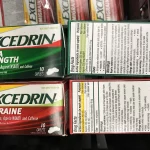How Long Does Cefdinir Stay In Your System?

Cefdinir, sold under the brand name Omnicef among others, is an antibiotic used to treat pneumonia, otitis media, strep throat, and cellulitis. It is a less preferred option for pneumonia, otitis media, and strep throat which may be used in those with a severe allergy to penicillin. It is taken by mouth. Cefdinir is in a class of medications called cephalosporin antibiotics. It works by killing bacteria.
How should this medicine be used?
Cefdinir comes as a capsule and suspension (liquid) to take by mouth. It is usually taken with or without food every 12 or 24 hours for 5 to 10 days, depending on the condition being treated. Take Cefdinir at around the same time every day. Follow the directions on your prescription label carefully, and ask your doctor or pharmacist to explain any part you do not understand. Take Cefdinir exactly as directed. Do not take more or less of it or take it more often than prescribed by your doctor.
Shake the suspension well before each use to mix the medication evenly.
You should begin to feel better during the first few days of treatment with Cefdinir. If your symptoms do not improve or get worse, call your doctor.
Continue to take Cefdinir even if you feel better. If you stop taking Cefdinir too soon or skip doses, your infection may not be completely treated and the bacteria may become resistant to antibiotics.
How long does Cefdinir stay in your system?
There are several factors that come into play when estimating how long Cefdinir will stay in your system because every patient has physiology unique to them. Here are some major factors you should consider when trying to understand how long Cefdinir will stay in your body:
• Age: Typically, the younger you are, the more efficient your body functions are. The more efficient your body functions, the faster Cefdinir will be removed from your system.
• Amount: The higher the dose of Cefdinir you have been taking, the longer Cefdinir will take to be removed from your system.
• Genetics: Genes predispose people to different metabolic functions, which is a key factor in how your body processes medications like Cefdinir. For this reason, your genetic makeup comes into play when estimating how long Cefdinir will remain in your system.
• Kidney and liver functions: The liver and kidneys eliminate everything you ingest, and Cefdinir is no exception. If your liver or kidneys are damaged, it will most likely take longer for your body to remove the Cefdinir from your system.
• Metabolism: Your metabolism determines how quickly you process foods, liquids, and drugs such as Cefdinir. If your metabolism is slow, it will take longer for your body to process and eliminate Cefdinir from its system than someone with a fast metabolism.
• Usage frequency: The longer you have been taking Cefdinir, the longer it will remain in your system. For example, it will take longer for someone who has taken Cefdinir for several years to remove Cefdinir from the body than someone who has only been taking Cefdinir for a few months.
Absorption Maximal plasma Cefdinir concentrations occur 2 to 4 hours postdose following capsule administration. Suspension bioavailability is 120% relative to the capsule formulation. Cefdinir is eliminated principally via renal excretion with a mean plasma elimination half-life of 1.7 hours about 100 minutes.
The half-life of a drug is the time it takes for the amount of a drug’s active substance in your body to reduce by half. This depends on how the body processes and gets rid of the drug. It can vary from a few hours to a few days, or sometimes weeks. About 94 to 97% of a drug will have been eliminated after 4 to 5 half-lives. Thus, it follows that after 4 to 5 half-lives, the plasma concentrations of a given drug will be below a clinically relevant concentration and thus will be considered eliminated. It takes about 8.5 hours for a single dose of Cefdinir to be eliminated from your system and 7-25% of the drug is excreted unchanged.
Side effects of Cefdinir
Along with its needed effects, Cefdinir may cause some unwanted effects. Although not all of these side effects may occur, if they do occur they may need medical attention.
Check with your doctor immediately if any of the following side effects occur:
More common
• Diarrhea
Rare
• Black, tarry stools
• chest pain
• chills
• cough
• fever
• painful or difficult urination
• shortness of breath
• sore throat
• sores, ulcers, or white spots on the lips or in the mouth
• swollen glands
• unusual bleeding or bruising
• unusual tiredness or weakness
Incidence not known
• Abdominal or stomach cramps or tenderness
• back, leg, or stomach pains
• bleeding gums
• blistering, peeling, or loosening of the skin
• bloating
• blood in the urine or stools
• bloody nose
• bloody or cloudy urine
• bloody, black, or tarry stools
• blue lips, fingernails, or skin
• bruising
• chest pain or discomfort
• clay-colored stools
• cold, clammy skin
• confusion
• coughing or vomiting blood
• cracks in the skin
• dark-colored urine
• diarrhea, watery and severe, which may also be bloody
• difficult or troubled breathing
• difficulty with breathing or swallowing
• dilated neck veins
• dizziness
• extreme fatigue
• fast heartbeat
• fast, weak pulse
• feeling of discomfort
• general body swelling
• general tiredness and weakness
• headache
• heavier menstrual periods
• high fever
• hives
• hoarseness
• increased thirst
• inflammation of the joints
• irregular breathing
• irregular heartbeat
• irregular, fast or slow, or shallow breathing
• itching
• joint or muscle pain
• light-colored stools
• lightheadedness
• loss of appetite
• loss of consciousness
• loss of heat from the body
• muscle aches
• muscle cramps or spasms
• muscle pain or stiffness
• nausea or vomiting
• noisy breathing
• nosebleeds
• pain in the ankles or knees
• pain or discomfort in the arms, jaw, back, or neck
• painful, red lumps under the skin, mostly on the legs
• pale skin
• persistent bleeding or oozing from puncture sites, mouth, or nose
• pinpoint red spots on the skin
• problems with bleeding or clotting
• puffiness or swelling of the eyelids or around the eyes, face, lips, or tongue
• rash
• red skin lesions, often with a purple center
• red, irritated eyes
• red, swollen skin
• scaly skin
• seizures
• severe stomach pain
• slow or irregular breathing
• sudden decrease in the amount of urine
• sweating
• swelling of the face, fingers, feet, or lower legs
• swollen lymph glands
• tightness in the chest
• unpleasant breath odor
• unusual weight loss
• upper right abdominal or stomach pain
• vomiting of blood
• weight gain
• wheezing
• yellow eyes or skin
Some side effects may occur that usually do not need medical attention. These side effects may go away during treatment as your body adjusts to the medicine. Also, your health care professional may be able to tell you about ways to prevent or reduce some of these side effects. Check with your health care professional if any of the following side effects continue or are bothersome or if you have any questions about them:
Less common
• Itching of the vagina or genital area
• pain during sexual intercourse
• thick, white vaginal discharge with no odor or with a mild odor
• vaginal yeast infection
Rare
• Acid or sour stomach
• belching
• constipation
• dry mouth
• excess air or gas in the stomach or intestines
• full feeling
• heartburn
• increase in body movements
• increased clear or white vaginal discharge
• indigestion
• lack or loss of strength
• passing gas
• rash with flat lesions or small raised lesions on the skin
• sleepiness or unusual drowsiness
• soreness or redness around the fingernails and toenails
• stomach discomfort, upset, or pain
• unable to sleep
Incidence not known
• Burning, dry, or itching eyes
• discharge, excessive tearing
• redness, pain, or swelling of the eye, eyelid, or inner lining of the eyelid
• swelling or inflammation of the mouth
Other side effects not listed may also occur in some patients. If you notice any other effects, check with your healthcare professional.
Call your doctor for medical advice about side effects. You may report side effects to the FDA at 1-800-FDA-1088.





